Invisible photo
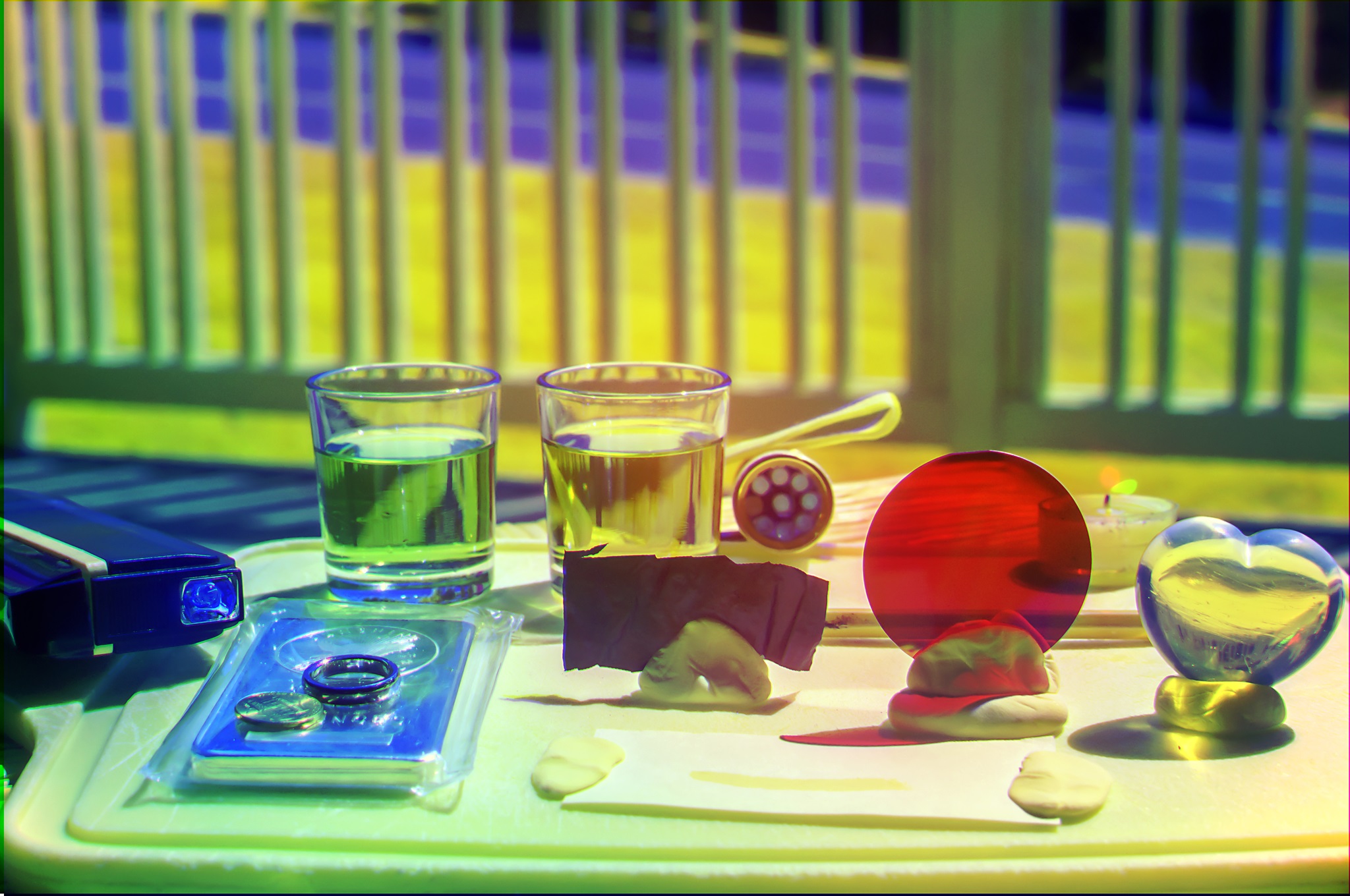
What are you talking about?
Friends often wonder: why am I doing invisible photography? Infrared, ultraviolet, thermal. Is there really something interesting there?
Since it’s better to see once than hear a hundred times, here’s a small demo for you. With 15 subjects. Here they are in the visible spectrum, and then we look at them in other ranges:
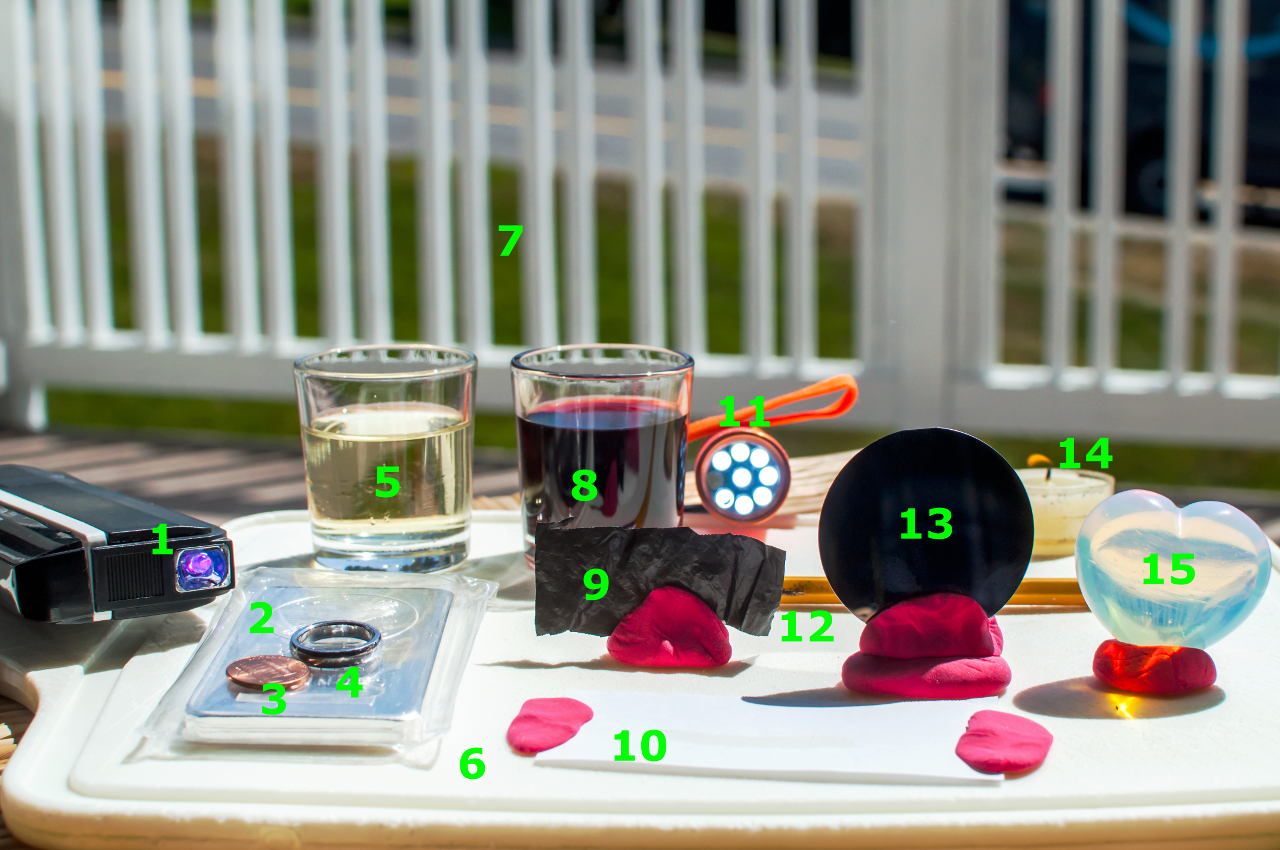
[Visible light, 400-750 nm. F / 6.3, 1/2500 sec, ISO 200, Nikkor 35 mm glass lens. Taken with a modified Nikon D90 with remote internal IR / UV filters through a visible light filter Kolari Vision Hot Mirror UV / IR Cut filter.]
The numbers indicate:
1. Ultraviolet lamp (UV-A range)
2. Silver bar
3. American one-cent copper-plated coin
4. Rhodium ring
5. A glass of white wine
6. Cutting board, supposedly made of PVC
7. Grass (in the background)
8. A glass of red wine
9. A piece of black plastic garbage bag
10. A piece of paper with a strip of anti-tanning cream applied to it
11. The included diode flashlight
12. Pencil
13. Silicon plate 0.8 mm thick
14. Burning candle
15. “Heart” from either selenite or smoky quartz
Lighting is the sun.
Ready? Go!
Ultraviolet world
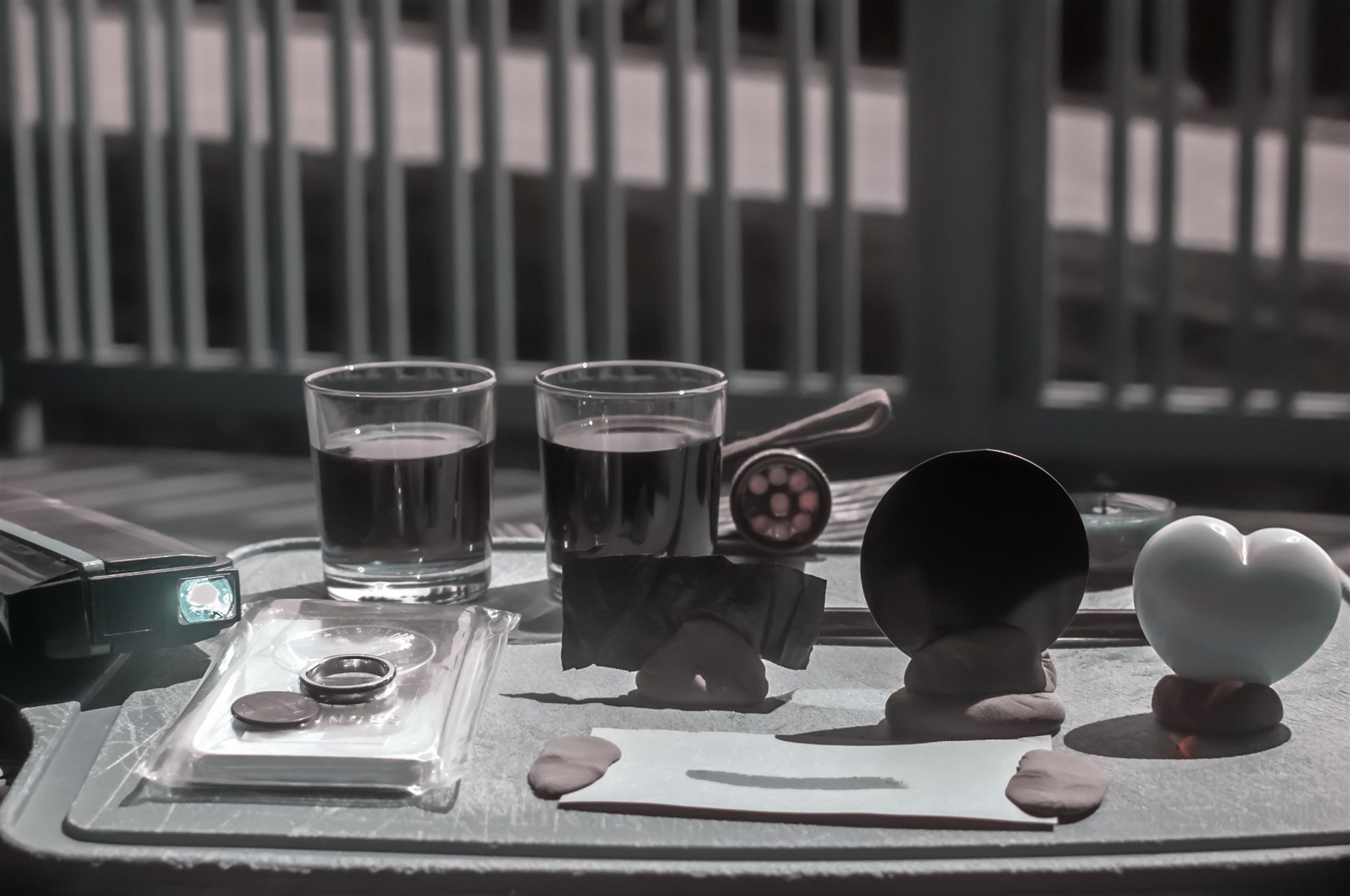
[Ultraviolet 350-400 nm. F / 6.3, 1/5 sec, ISO 3200, Nikkor 35 mm glass lens (which determined the lower limit). Shot on a modified Nikon D90 with remote internal IR / UV filters. Kolari Vision UV Ultraviolet Bandpass Transmission Filter.]
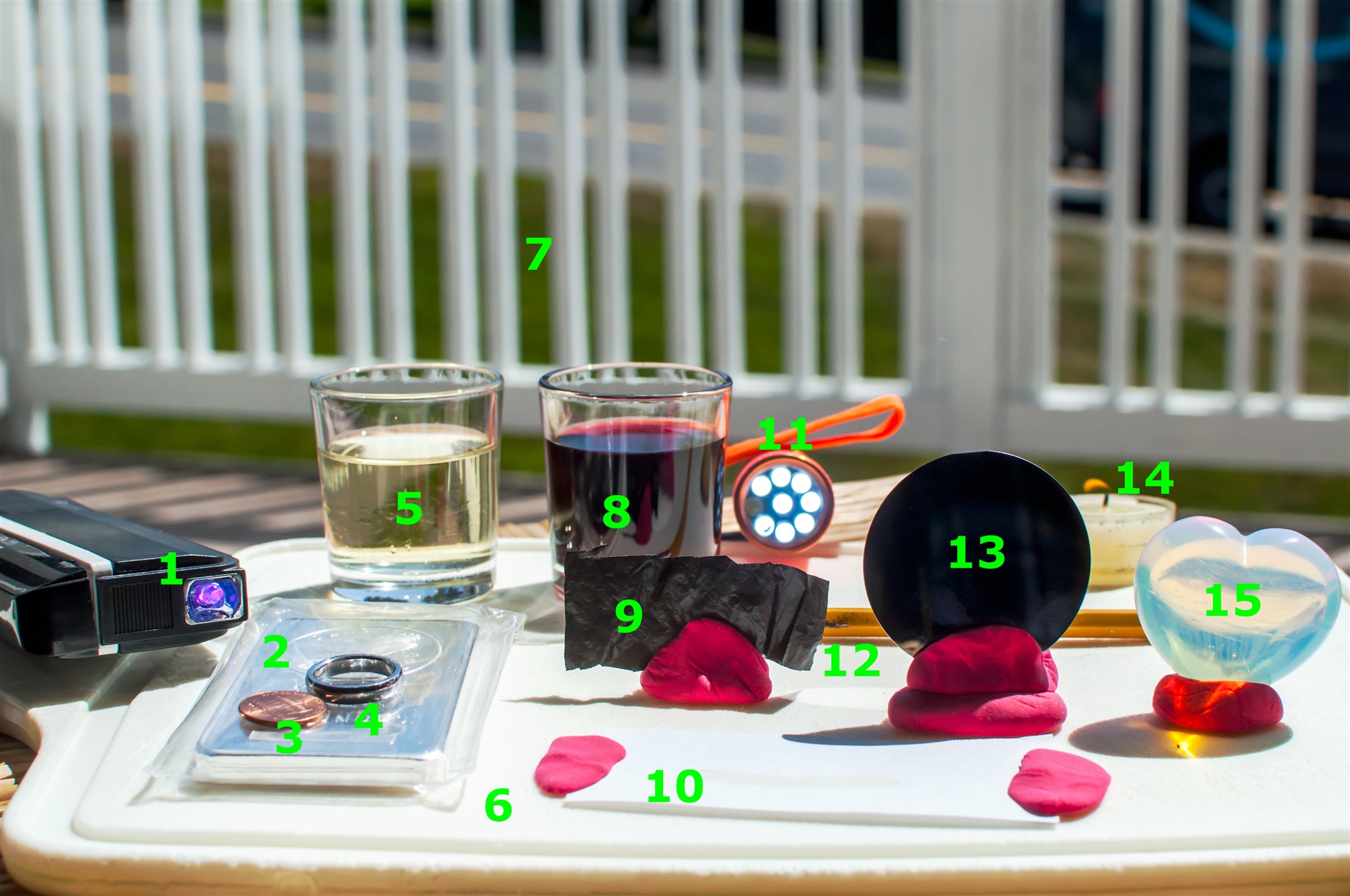
What changed? [The visible picture is duplicated to facilitate comparison]
1. As expected, the UV lamp has become brighter.
3. But the copper has darkened. It is known to reflect poorly in UV.
5. White wine has become ... black. Yes, grapevine is almost opaque in the near ultraviolet. With peach wine this number does not work.
6. Cutting board darkened catastrophically. And all the scratches and cuts on it appeared brightly. Patent idea: the use of ultraviolet photography to distinguish between freshly used boards and boards that have stood idle for a long time (there should be an emoticon here).
7. The grass has also darkened. In blue and UV, this is characteristic of all vegetation. Which represented some difficulty for early photographers working with orthochromatic film.
10. Anti-tanning cream. He can be seen! Here's another application: before going to the beach, take pictures in the UV and detect gaps in the anti-tan coating.
11. And what happened to the diode flashlight? No, I didn’t turn it off. He just does not shine in the UV. This is probably another reason why museums with paintings are trying to switch to diode lighting. Because from ultraviolet paints sometimes fade.
12. The pencil, or rather the yellow paint on it, also darkened.
14. The flame of a candle is barely noticeable. What was to be expected: the temperature is not the one to seriously shine in the ultraviolet.
15. And the "heart"? Rayleigh scattering ruined him. There is no more transparency; there is a milky-looking stone.
Farther?
Near infrared, 750-900 nm

[Near IR, 750-900 nm. F / 6.3, 1/2500 sec., ISO 1600, Nikkor 35 mm glass lens. Shot on a modified Nikon D90 with remote internal IR / UV filters. Filter B + W # 093 (87C).]

What interesting is observed here?
1. The ultraviolet lamp is completely blocked. As expected.
2. For some reason, silver has darkened, although it should reflect well in IR. Why? Because in the bullion we see the reflection of the sky. Consisting mainly of blue visible light. The filter suppressed it. Those who shot in the near infrared know how nearly black the sky in this range can seem.
4. However, the relative brightness of rhodium has fallen compared with copper or silver. Because it really reflects the near IR worse (see Figure 5)
5. White wine is completely transparent. Like ... red! Both became like plain water.
7. The grass brightened dramatically. Which, again, is characteristic of almost any vegetation in this range.
11. The diode flashlight is silent.
14. But the candle shines, and shines brightly. Well, of course, at its temperatures, most of the radiation does not come from visible light.
15. What about a pebble-heart? It became transparent, like plain glass.
Let's continue.
Again the near IR, but a little further away: 1000-1050 nm.
To see this range, I took a regular filter, took out the glass, and inserted three silicon wafers with a total thickness of 2.4 mm. Here is the product:
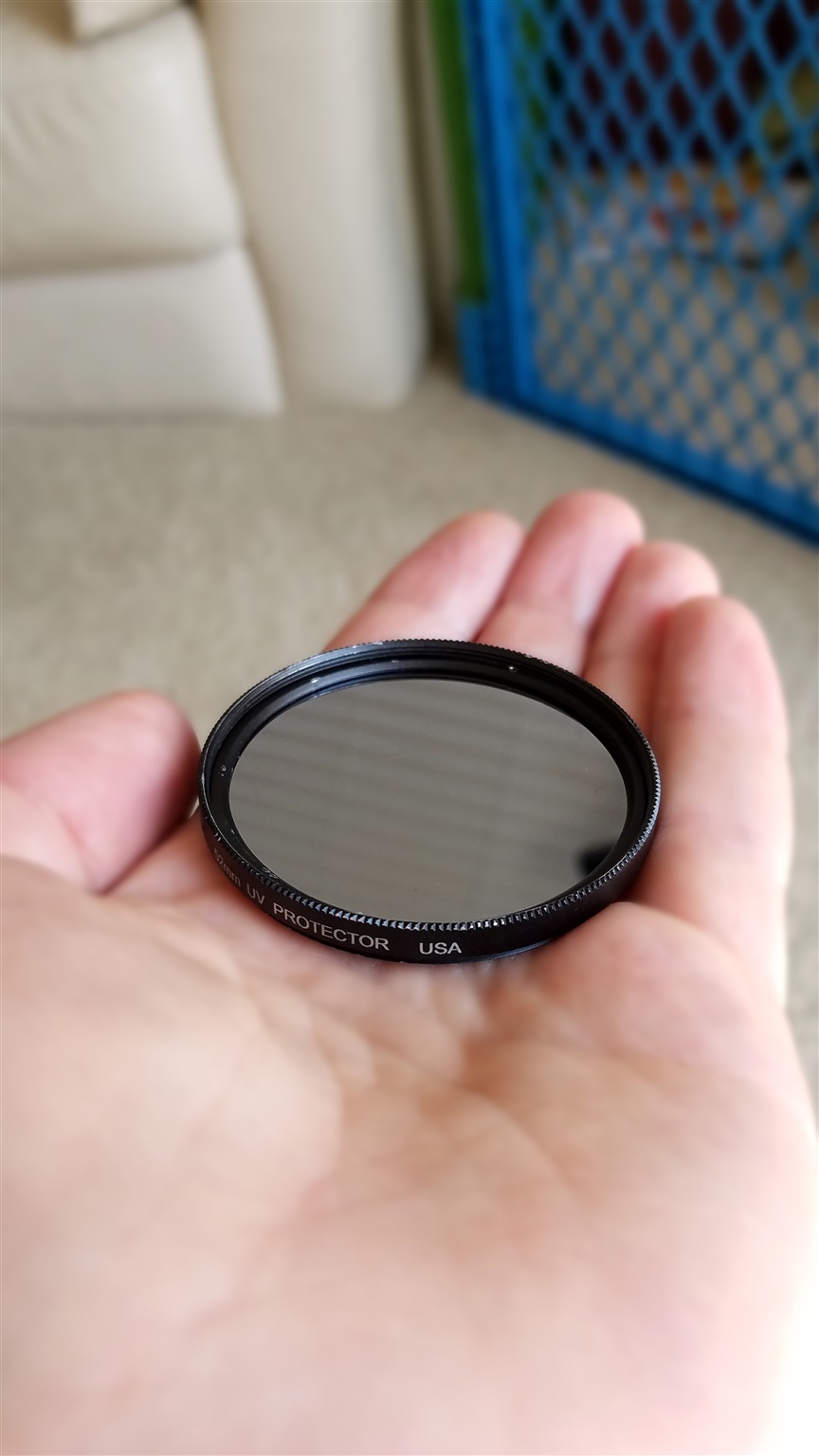
And so - the result of its application:
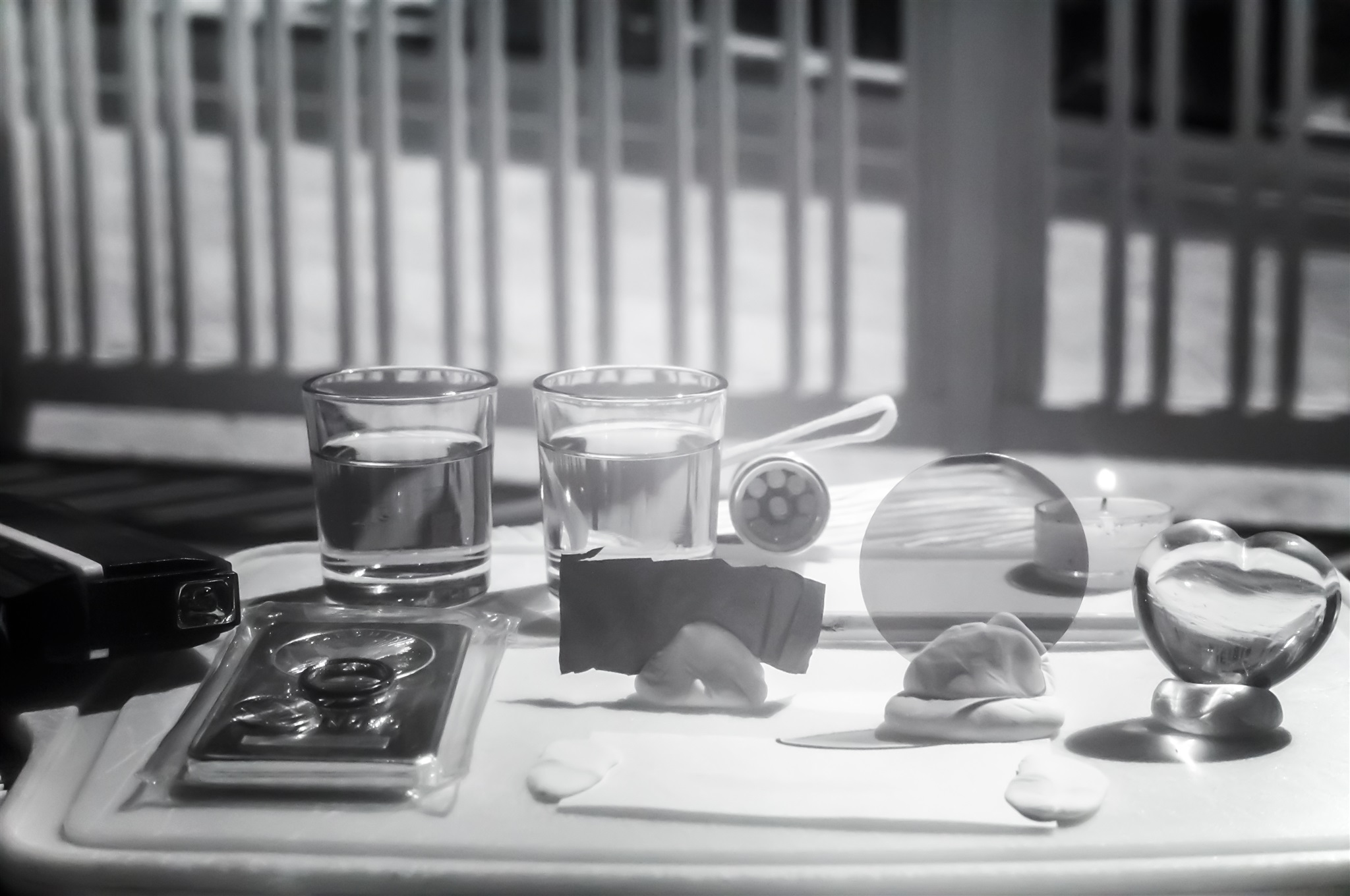
[Near IR, 1000-1050 nm. F / 6.3, 1/2500 sec., ISO 1600, Nikkor 35 mm glass lens. Shot on a modified Nikon D90 with remote internal IR / UV filters. Filter: 2.4 mm silicon.]

The picture is generally similar to the previous one. But there are interesting differences:
13. The silicon wafer has become transparent. Everything is perfectly visible through it. Something like this:

14. The candle flame became even brighter.
And no, the metal has not darkened. This is just vignetting from filter imperfection.
Let's continue.
Thermal range 6-14 microns
By the standards of this frame, all the previous ones are made at almost the same wavelength. Here we immediately increase it by a factor of ten. In this range, objects of room temperature shine, including the human body. A lot of interesting things can be seen in the heat, but for the sake of brevity, we will confine ourselves to the framework of the demo.
Since it was filmed from a slightly different point, and in slightly different compositions, I bring two frames:
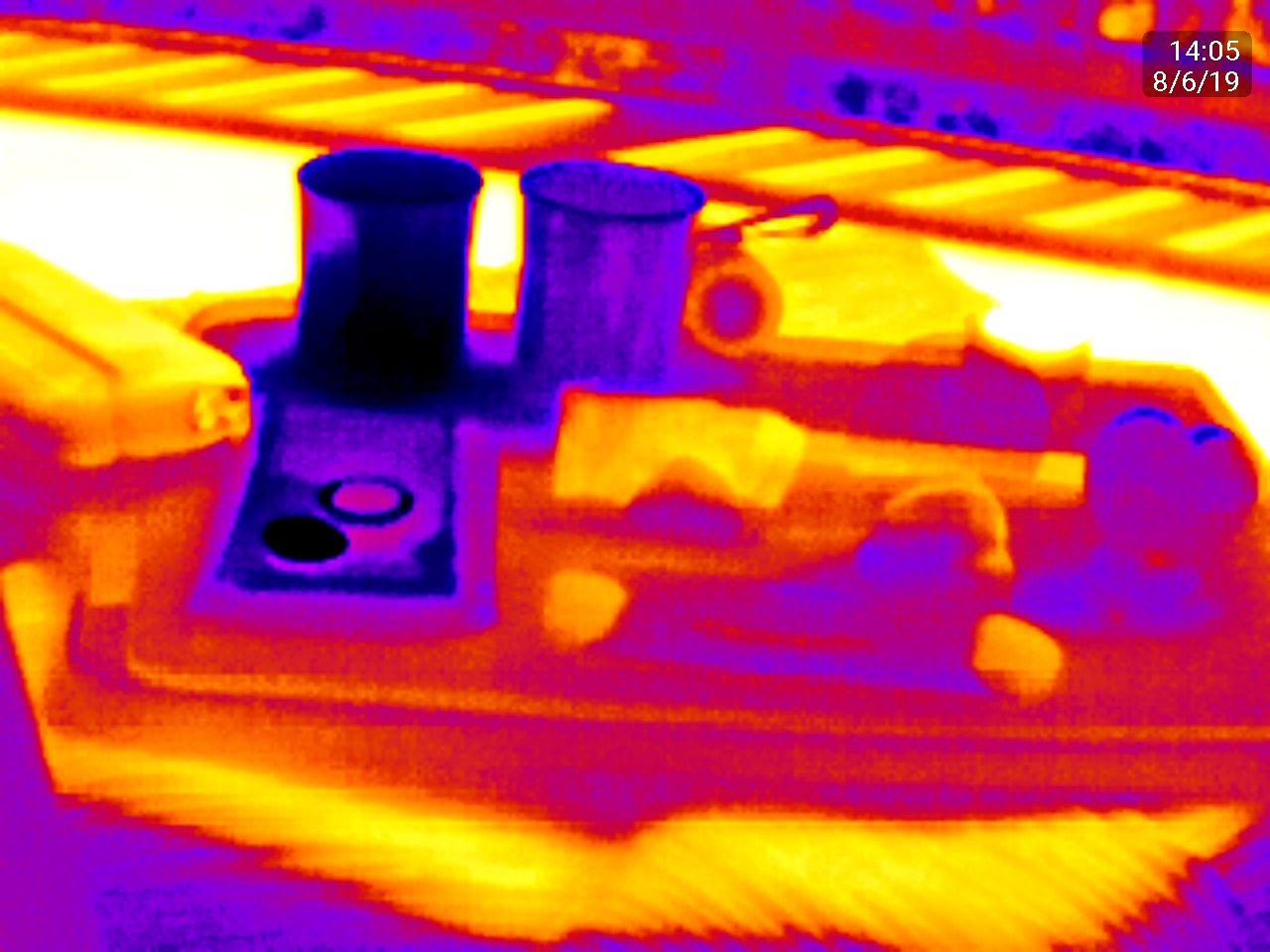

[Thermal range, 6-14 microns. SeekThermal CompactPRO Camera. Shooting options, unfortunately, are not available in exif. By ear, the exposure is about 1/10 of a second]

What is observed?
5. Glasses, like any glass, are opaque in heat. But it is clear that their contents are only recently from the refrigerator.
9. Can be seen through black polyethylene! This is better seen in the lower frame, where the lower part of the glass and the pencil are clearly visible through the plastic.
10. Interesting, but on paper again appeared anti-tanning cream. Probably because of the good absorption of UV, it warmed up more strongly than paper and now gives off this energy in heat.
11. The diode flashlight shines, but almost does not warm. All in all, a good flashlight.
13. The silicon wafer is still transparent.
14. And the candle is so bright that it is simply overexposed. Because of what, alas, in the picture it is not even immediately distinguishable.
And now - the bonus material!
We combine
Assign a blue channel to ultraviolet light, infrared 750-800 nm - green, and micrometer - red. And put it all together:

A lot of things immediately become clearer and clearer:
- Blue objects are bright or transparent in ultraviolet light.
- Yellow and green, on the contrary, reflect poorly in UV, but are bright in the near IR.
- But the red ones are transparent or bright near 1 micrometer.
Thank you all and have a nice day!
The article can be downloaded and saved in PDF (backup Mirror ).
All Articles